For this assignment I was really interested in perception and perspective. Particularly, I was inspired by the mathematically influenced art movements. This lead me to look further into the Optical Art movement, or Op Art. This is characterized by high contrast, strong geometry, and near abstract or surrealist themes can visualize concepts like infinity or regeneration. Often, artworks that harness this aesthetic create motion directed by the artists by manipulating the eye to follow the lightest space.
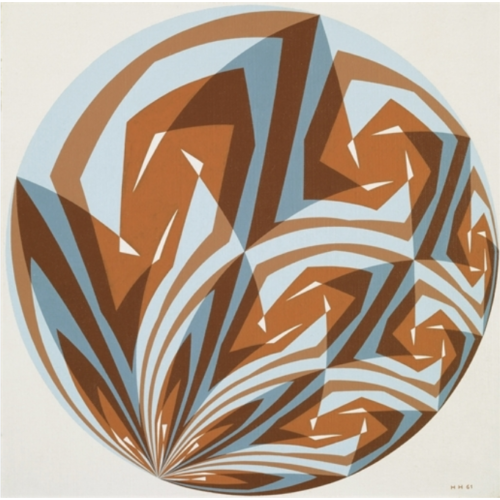
The first image I have chosen to showcase is a piece by Hans Hinterreiter titled ‘Konstruktionszeichnung zu Opus 73’. I chose to showcase this artwork because I like the convergence and divergence motion that the artists has created in several places. And to make the optics more interesting, the artists has made two fields of light and dark spaces; one being the blue and brown striping and the other being the highlights and blocking shadows. To me, Hinterreiter has taken this aesthetic in his own direction which I really appreciate.
A few decades after the turn of the 20th century, Victor Vasarely is often credited with the beginning of Op Art when he painted ‘Zebra’ (1937), which is pictured below. This image is a combination of white lines on a black background, some of which overlap in in different orientations to create a sense of depth and movement between the two subjects.
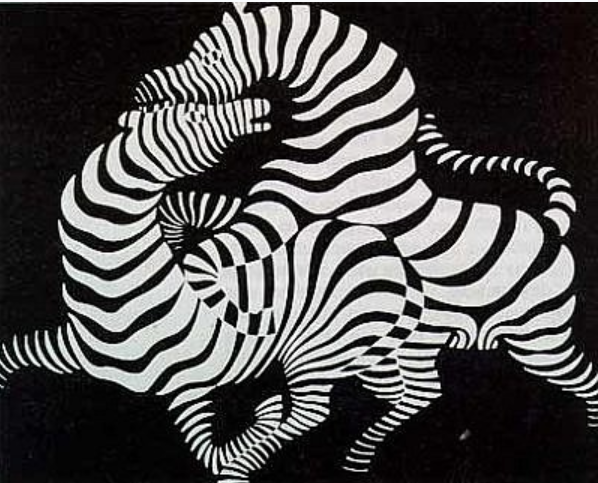
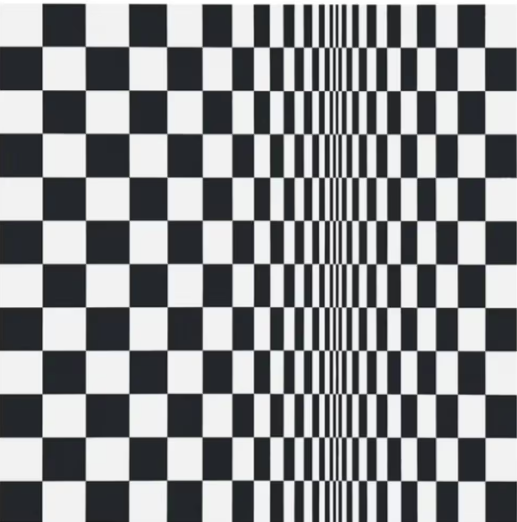
In comparison to ‘Zebra’, Bridget Riley the famous Op Art painter made ‘Movement in Squares’ (1961), pictured above. 30 years later, Riley followed the same Op Art rules that Vasarely did. It is common for Op Art artists to maintain their black and white color schemes as these have the greatest contrast and thus most effectively guides the users eyes into false movement.
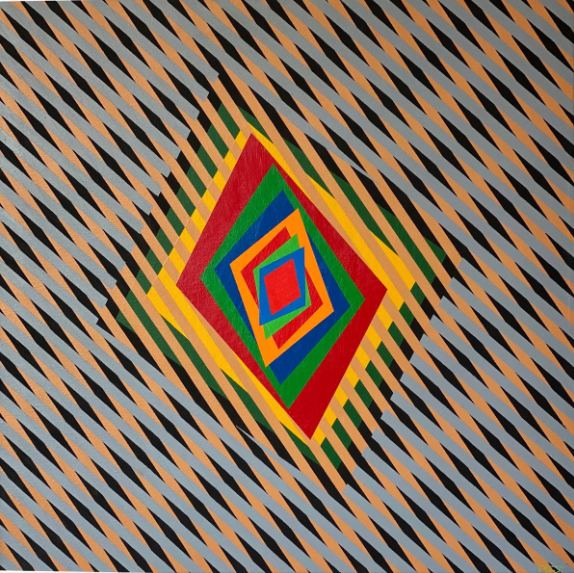
While in the height of the public’s interest during the 1960’s, some critics considered the Op Art aesthetic to be an empty fad, a fleeting trend that would pass. And some artists were somewhat discouraged from continuing their pursuits because of the potential for their work to be stolen and sold in basic consumer designs. Despite these negative attachments to the aesthetic, the desire to blend both art and science makes this aesthetic an inspiring to me. Some artists, like Richard Anuszkiewicz, have continued to make art in this genre since the 50’s. One of their most recent works, ‘Dynamic Red With Blue’, was made in 2017, proving that there is still plenty of creative potential in Op Art.
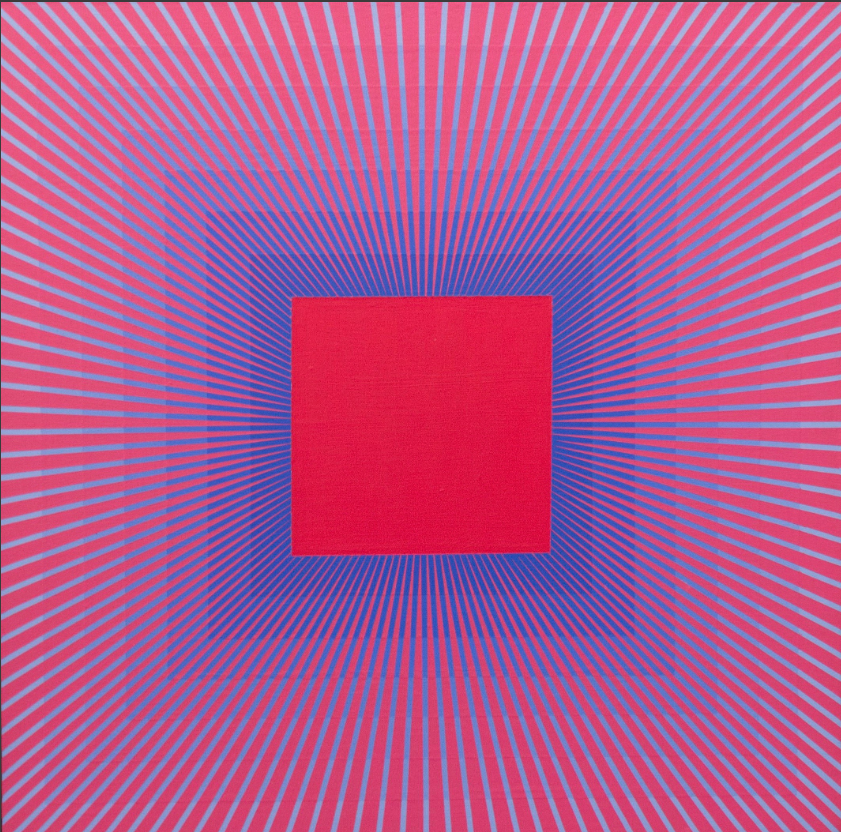
artst. “Op Art Artists – 10 Most Famous.” Artst, 3 Sept. 2022, www.artst.org/op-art-artists/. Accessed 24 Jan. 2024.
“Bridget Riley Paintings, Bio, Ideas.” The Art Story, www.theartstory.org/artist/riley-bridget/#pnt_2. Accessed 24 Jan. 2024.
Hencz, Adam. “Op Art: What Is Op Art and Famous Works.” Artland Magazine, 26 Aug. 2021, magazine.artland.com/art-movement-op-art/.
“Konstruktionszeichnung Zu Opus 73, 1961 – Hans Hinterreiter – WikiArt.org.” Www.wikiart.org, www.wikiart.org/en/hans-hinterreiter/konstruktionszeichnung-zu-opus-73-1961. Accessed 24 Jan. 2024.
“Op Art Movement Overview.” The Art Story, 2011, www.theartstory.org/movement/op-art/.
“Richard Anuszkiewicz.” Www.richardanuszkiewicz.com, www.richardanuszkiewicz.com/paintings/new. Accessed 24 Jan. 2024.
“Victor Vasarely Art, Bio, Ideas.” The Art Story, www.theartstory.org/artist/vasarely-victor/#pnt_6. Accessed 24 Jan. 2024.

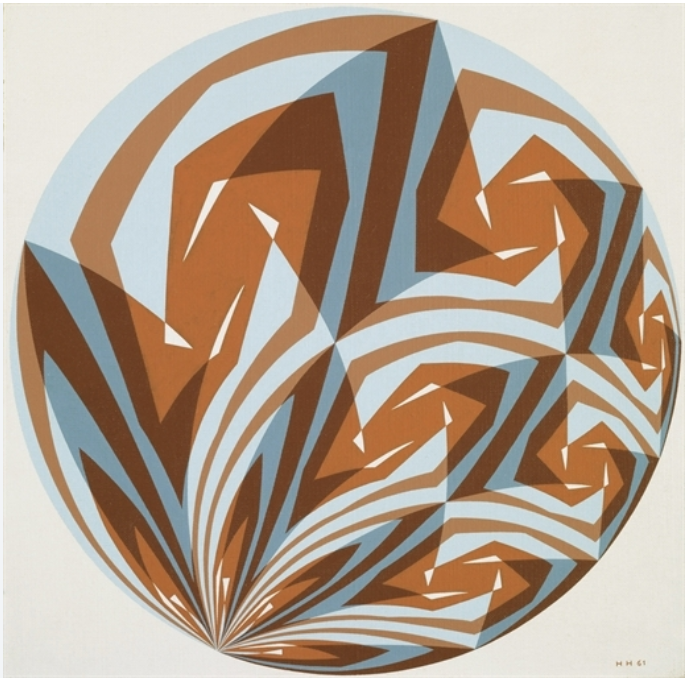
5 Comments. Leave new
[…] Aesthetics Exploration – Op Art […]
Thank you for your insight into the Op Art movement Riley. I agree that the artist’s use of contrast and conflicting colors is unique to the style. It creates a striking composition that entices the viewer and creates an interesting blend of abstract art and mathematics. Did you know whether or not Op Art artists would incorporate mathematic equations or if the artwork is purely geometric?
Im unsure if all Op Art artists have mathematical purpose behind their designs, but I do know that math does inspire some of these artists. My favorite example would be the work of M.C. Escher who is best known for his work that involves mathematical translation and ‘impossible’ shapes like the Mobius strip.
I really enjoyed this post. The use of simple shapes and colors to create psychedelic works of art with depth and perspective is both intriguing and visually stimulating. It’s interesting that the potential of corporations stealing Op Art designs for commercialization negatively impacted the movement and stopped artists from engaging in the Aesthetic. Do you know if there was any relationship between the Op Art movement and the works of M. C. Escher? They seem to both utilize similar themes and mathematical influences.
Yes! Thank you for your insightful comment. I would agree that M.C. Escher’s work has some defining style features that align with this aesthetic. This being said, I also think that there is a touch of realism in Escher’s works that sets him apart from the purely abstract work that was dominating the art scene in his time. His work ‘Day and Night’ exemplifies this cross between his interest in abstract Op Art and realism, where the use of contrast to confuse the eye is clear in his bird tiling and the images far sides, but he grounds this optical illusion in a realistic landscape setting. This piece has clear influence of math, pattern, and contrast which aesthetically aligns with the Op Art movement, however it also shows how most of his work is very much unique to him.